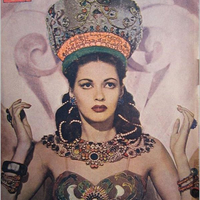Júlia Laki | Central European University (original) (raw)

Uploads
Papers by Júlia Laki
I believe that the way we relate to our inanimate environment, the most basic and humble elements... more I believe that the way we relate to our inanimate environment, the most basic and humble elements of our everyday lives, which make up the routines of our existence as humans tells a lot about the ways our thinking changes historically and culturally. On the simplest level of eating, drinking, taking care of our belongings, keeping order around ourselves, we create and re-create the stuctures that dominate our cultures on more abstracted levels. If we take a critical look at how we treat "the things themselves", we might realise both the effects and the very roots of our categories of thought. I would like to argue that for this reason, a strict division between the two realms that, following the terms used by Norman Bryson, I will label rhopographic (that of the everyday) and megalographic (that of acts we perceive to be distinctive), cannot hold. My area of investigation will be the domain of still life as a genre of visual art, and I shall treat that genre as a specific territory where our attitudes towards our environment reveal themselves.
etd.ceu.hu
This work traces certain intersections of medicine and art to argue that an understanding of embo... more This work traces certain intersections of medicine and art to argue that an understanding of embodiment is always articulated at the nexuses of different practices. It starts out from a consideration of visuality as central to the modern medical paradigm, enhanced by technological modes of looking from the 19 th century onwards. The thesis considers photographic imaging, clinical medicine, and eugenics in conjunction to highlight some characteristic aspects of the late-19 th -century understanding of corporeality. It then proceeds to consider medical imaging technologies and links them to certain desires that were also at work in the photographs analyzed in the first chapter. Furthermore, contemporary art pieces are introduced in the last section to underline the ways in which the dividing lines between artistic and scientific epistemology have been subjects to constant change. The thesis ends with a consideration of contemporary artistic practices and biosocial identity formations in creating a new, experimental public around a medical interpretation of embodiment.
I believe that the way we relate to our inanimate environment, the most basic and humble elements... more I believe that the way we relate to our inanimate environment, the most basic and humble elements of our everyday lives, which make up the routines of our existence as humans tells a lot about the ways our thinking changes historically and culturally. On the simplest level of eating, drinking, taking care of our belongings, keeping order around ourselves, we create and re-create the stuctures that dominate our cultures on more abstracted levels. If we take a critical look at how we treat "the things themselves", we might realise both the effects and the very roots of our categories of thought. I would like to argue that for this reason, a strict division between the two realms that, following the terms used by Norman Bryson, I will label rhopographic (that of the everyday) and megalographic (that of acts we perceive to be distinctive), cannot hold. My area of investigation will be the domain of still life as a genre of visual art, and I shall treat that genre as a specific territory where our attitudes towards our environment reveal themselves.
etd.ceu.hu
This work traces certain intersections of medicine and art to argue that an understanding of embo... more This work traces certain intersections of medicine and art to argue that an understanding of embodiment is always articulated at the nexuses of different practices. It starts out from a consideration of visuality as central to the modern medical paradigm, enhanced by technological modes of looking from the 19 th century onwards. The thesis considers photographic imaging, clinical medicine, and eugenics in conjunction to highlight some characteristic aspects of the late-19 th -century understanding of corporeality. It then proceeds to consider medical imaging technologies and links them to certain desires that were also at work in the photographs analyzed in the first chapter. Furthermore, contemporary art pieces are introduced in the last section to underline the ways in which the dividing lines between artistic and scientific epistemology have been subjects to constant change. The thesis ends with a consideration of contemporary artistic practices and biosocial identity formations in creating a new, experimental public around a medical interpretation of embodiment.


